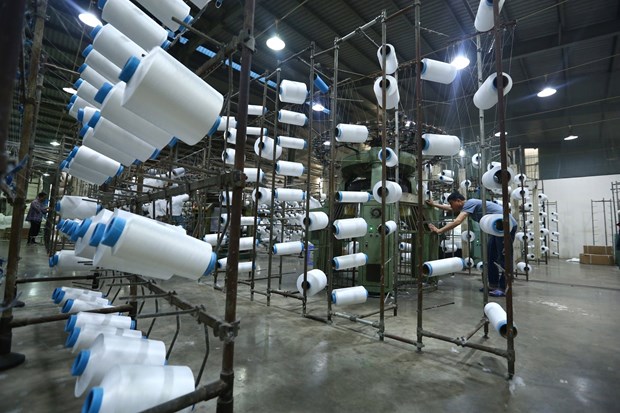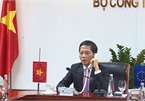 |
|
A yarn factory of the Hue Textile Garment JSC in Thua Thien-Hue province
|
A resolution ratifying the EVFTA and the EU-Vietnam Investment Protection Agreement sailed through the National Assembly at its ongoing ninth session in Hanoi on June 8, with more than 90 percent of delegates voting in approval.
According to Luong Hoang Thai, Head of the Ministry of Industry and Trade (MoIT)’s Multilateral Trade Policy Department, Vietnam makes up only 2 percent of imports by the EU - the world’s second largest importer - due to the competition with other economies.
Vietnam has been enjoying trade preferences offered unilaterally by the EU under the General Scheme of Preferences (GSP), but only 42 percent of tariff lines are zero.
With the EU’s strong commitment to market opening and eliminating close to 100 percent of tariff lines, the EVFTA is expected to grow Vietnam’s exports to the bloc by about 42.7 percent in 2025 and 44.37 percent in 2030.
Vietnam’s total export value is projected to increase by between 5.21 and 8.17 percent in the first five years of implementation, 11.12 and 15.27 percent in the following five years, and 17.98 to 21.95 percent in the subsequent five years.
Apart from exports, Vietnamese imports will also benefit from the agreement, with products and materials of high quality and reasonable prices, especially machinery, equipment, and technologies, entering the country.
Once effective, the EVFTA will help recover Vietnam’s economy and raise GDP by 2.18 to 3.25 percent in the 2019-2023 period, 4.57 to 5.3 percent in 2024-2028, and 7.07 to 7.72 percent in 2029-2033, according to Minister of Industry and Trade Tran Tuan Anh.
Worth noting is that the deal promises new value chains for both sides and a more open and favourable investment environment in Vietnam, helping it attract more EU investment, particularly in services, finance, automobiles, processing and manufacturing, IT, hi-tech, and agricultural processing.
Nicolas Audier, Chairman of the European Chamber of Commerce in Vietnam (EuroCham), said the EVFTA has opened up a new chapter in investment and trade ties between the two sides.
Vietnamese commercial affairs offices in the EU, Belgium, and Luxembourg have recommended Vietnamese exporters review their production and stockpiling capacity to meet orders from the bloc.
To benefit from tax incentives under the EVFTA, materials must originate from the EU or Vietnam at fixed ratios, which is a major challenge for Vietnamese firms whose materials are primarily imported from China or ASEAN.
Moreover, the EU has set high requirements on product quality, food hygiene, packaging, and the environment, experts said, encouraging Vietnamese enterprises to make every effort to improve product quality.
They also pointed to trade remedies the EU may impose on Vietnamese goods.
Local companies should therefore change their mindset and use the pressure of competition as momentum to renovate and develop and adapt to changes in the business environment following international economic integration, Minister Anh said./.VNA

EVFTA hoped to take effect on August 1
Minister of Industry and Trade Tran Tuan Anh and EU Trade Commissioner Phil Hogan reached consensus on the point of time for the EU-Vietnam Free Trade Agreement (EVFTA) to take effect, during their phone talks on June 8.

EVFTA widens varied procurement chances
Starting from this year, investors from EU member states will for the first time be allowed to tender for many types of public projects in Vietnam under EU-Vietnam Free Trade Agreement commitments.